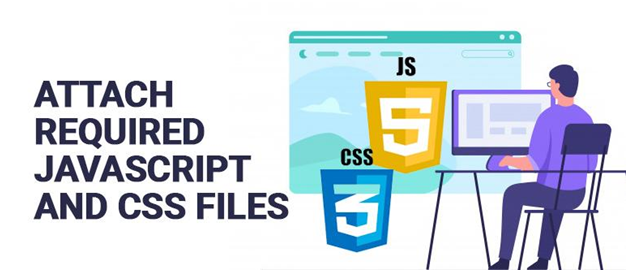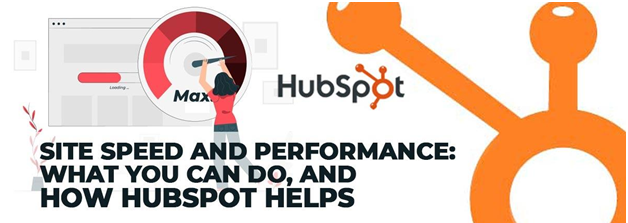CMS Hub is one of the optimized and quality content management systems. This blog will let you know about some of the things that the system takes care of behind the scene. Along with it, we will discuss the steps that will help to improve the performance and speed of the website.
How HubSpot Optimize the Website Behind the Scene?
1. SSL (Secure Socket Layer)

Since October 2017, the web pages with the forms are flagging out which are not SSL enabled i.e. “not secure”. Google Chrome comprises 60% of the browser market share as they want to want thousands of visitors and websites across the web.
Standard SSL is important for all the landing pages and websites hosted with the HubSpot. It will keep all your user data secure and Google Chrome won’t display the warning when the audience loads your web page.
2. HTTP/2
The HubSpot and WordPress Development Services hosted websites that include SSL traffic are served with the HTTP/2. It is the replacement of HTTP expressed “on the wire”. Semantics, HTTP methods, and status code are the same and you can use the APIs as HTTP/1.x that will represent the protocol.
The aim of the protocol is specifically on performance, network, perceived latency, and server resource usage. Their focus is to only allow the single connection from the browser to the web page.
3. IPv6
4. JavaScript Minification
The spaces, comments, and line breaks help to read the coding files, and editing the meantime browser also takes additional time to parse. If the JavaScript files are small then they will provide a quick and smooth user experience for the visitors of the websites. JQuery is the most famous JavaScript library that will showcase the impactful minification. Minified JQuery comprises 86K in comparison with the unminified version at 271K.
With the help of HubSpot automatically remove the unnecessary space, comments, and line breaks from the JavaScript files so that they can surpass and can be delivered as fast as possible. The JavaScript files that are uploaded to the file manager cannot be minified automatically so you must minify them before uploading if you wish to include them on your web page.
When you update your JavaScript file then they minify the background so, in a short time, you can see the .min .js of files that are accessed on the live pages. Due to the syntax error, there might be chances where you won’t be able to minify the JavaScript files.
5. Server Caching and Browser
When the visitor sends a request to a page then the browser forms a complex string of all the requests. All requests hit the server that does the complicated calculations and provides the path for the visitor to serve them the required files.
HubSpot caches up the files and pages on both the browser and server level to provide quick delivery of the page to the visitors. If there are changes in the page then automatically we expire up the server that caches the page.
Server caching is important for the Smartphone website visitor and visitors outside the US because network latency is higher.
6. CSS Combining
HubSpot minifies the CSS and removes the line breaks and unnecessary space and combines the CSS files on one page and creates one CSS file. The reason behind this is to minimize the HTTP request and quick parsing and delivery of CSS on the web page.
After this, CSS files are sent through HTTP/2 push. This means that browsers can download the CSS required for the page in which the HTML has finished loading.
7. Domain Rewriting

Every additional domain of the website has an additional connection and DNS lookup. If you use fewer domains then accordingly the web page will load faster. With the HTTP/2, you can load multiple files over the same connection. The old guidelines are not relevant for sharing the assets among the different domains.
Through CMS hub, assets URL that is referenced in CMS pages like images, files, CSS are rewritten automatically so that the domain can match with the current page if possible.
8. Text Compression
The files that are text-based like JS, HTML, and CSS are compressed by gzip before they are served before the browsers. With the compression, you can reduce the size of the file up to 10 x. Through minification, you can speed up the parse time of JS and CSS files in the browser. With the compression, you can get the files browser quickly.
9. Image Optimization/ Compression and Image Resizing
When the image is uploaded with the help of HubSpot file manager then they are optimized automatically. PNGs and JPEGs strip of the metadata. All the other images are also recompressed so that they can be visually lossless. Along with it, you can showcase the images in different encodings if you want to represent them as smaller PNGs compared with the JPEGs.
The images are then resaved at 72dpi despite their original resolution. It states that when you upload the file at 300dpi for the print then it will be saved at 72dpi that is standard for the web.
When the CMS renders a page then the HubSpot will resize the image, it will change the height and width attributes. If the image is hosted through the file manager then you can resize the height and width path segment to the URL of the image. If the URL comprises the width and height parameter then the CMS will intercept the request and will change the dimension as requested. The browser can opt from the multiple options given for the image resolution while loading so that the image can look clear on high and standard-resolution displays.
Image compression/ optimization and resizing the image are enabled automatically through HubSpot hosted files/ pages.
10. Accelerated Mobile Pages
Accelerated mobile pages or AMP is the specific page format for the mobiles that helps to loads the content quickly AMP can start in the HubSpot hosted web page or blog post with just a flip of a switch. But, for this, you require proper knowledge about how to access the Accelerated mobile pages in HubSpot.
How to optimize the Website?

1. In Footer Load JQuery
JQuery is the JavaScript library that is by default included in all the HubSpot websites. You have the option to add JQuery in the footer in all your websites hosted through HubSpot. If you load the JQuery to the footer then it will allow the page to parse without pause. Along with it, JQuery will be loaded when required to ensure that all visual codes like CSS and HTML render first.
All these things depend upon the JQuery after you load it in the footer. If you want to test it then load JQuery to the footer, you can add it through the query string.
2. Attach Required JavaSCript and CSS Files

You should attach the required CSS and JavaScript files for the templates and pages. Google comprises the nifty coverage tool that will locate the request JavaScript and CSS that is used on a particular page that states that this factor can work as a scoring factor in the future. If there are less CSS and JavaScript on the page, it will provide a much effective user experience.
If you attach the CSS and JavaScript files with the custom modules then it will help to reduce the number of unused codes that the page loads. It will make sure that the dependent code will stay on the same page where custom modules stay. If the custom module is used several times on one page then HubSpot will include the JavaScript and CSS files once.
3. Reduce Cross-Origin HTTP Request and HTTP Request
You should refrain to form plenty of HTTP requests on your page. Make sure to include a few files on the website. If there is a cross-origin HTTP request then it will slow down the pages. You should host everything from HubSpot to avoid cross-origin and external resources.
Summing Up
I hope through this post, you have got an idea about how CMS HubSpot helps in Optimizing the websites and providing great user experience to the visitors. But, along with it, there is a lot more than you can think of to enhance the performance of your website.








0 Comments